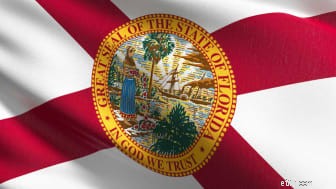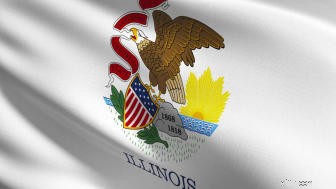
Nhờ đại dịch COVID-19, hàng triệu người Mỹ đã có được một khóa học không mong muốn đối với hệ thống bồi thường thất nghiệp của Hoa Kỳ. Có rất nhiều câu hỏi thường gặp của những người lần đầu đi xin trợ cấp thất nghiệp. Làm cách nào để nộp đơn xin trợ cấp? Tôi sẽ nhận được bao nhiêu? Quyền lợi sẽ kéo dài bao lâu? Mọi người cần câu trả lời cho những câu hỏi này ngay lập tức. Nhưng một khi bạn bắt đầu nhận được các khoản thanh toán, một câu hỏi khác có thể sẽ xuất hiện trong tâm trí bạn: Tôi có phải trả thuế cho các khoản trợ cấp thất nghiệp của mình không?
Khi nói đến thuế thu nhập liên bang, câu trả lời chung là có. Uncle Sam đánh thuế trợ cấp thất nghiệp như thể chúng là tiền lương ( mặc dù miễn trừ tới 10.200 đô la tiền bồi thường thất nghiệp nhận được vào năm 2020 từ thuế liên bang cho những người có tổng thu nhập đã điều chỉnh dưới 150.000 đô la ). Tuy nhiên, khi nói đến thuế thu nhập của tiểu bang, nó phụ thuộc vào nơi bạn sống. Hầu hết các tiểu bang đánh thuế hoàn toàn tiền trợ cấp thất nghiệp. Tuy nhiên, một số tiểu bang hoàn toàn không đánh thuế chúng (đôi khi vì tiểu bang không có thuế thu nhập), và một số tiểu bang sẽ chỉ đánh thuế một phần lợi ích của bạn. Ngoài ra, giống như chính phủ liên bang, một số tiểu bang đang đưa ra những ngoại lệ đặc biệt đối với quy tắc chung của họ cho năm 2020 và / hoặc năm 2021 để giúp những người bị mất việc làm vì đại dịch.
Tiểu bang của bạn đứng ở đâu khi đánh thuế trợ cấp thất nghiệp? Đọc để tìm hiểu. Chúng tôi cũng sẽ cho bạn biết những tiểu bang nào đã ban hành hướng dẫn về cách họ sẽ xử lý khoản miễn trừ 10.200 đô la liên bang cho khoản bồi thường thất nghiệp nhận được vào năm 2020. Sau đó, như một phần thưởng, chúng tôi phác thảo các mức thuế thu nhập, doanh số và tài sản của mỗi tiểu bang - và cung cấp liên kết đến trang của tiểu bang trong Hướng dẫn từng tiểu bang về thuế đối với các gia đình trung lưu - để bạn có thể hiểu được gánh nặng thuế tổng thể ở nơi bạn sống.

Thuế của Tiểu bang đối với trợ cấp thất nghiệp: Alabama không đánh thuế trợ cấp thất nghiệp. Ngoài ra, khoản bồi thường thất nghiệp được cung cấp thông qua Đạo luật CARES của liên bang và các phần mở rộng tiếp theo được miễn thuế thu nhập bang, quận hoặc thành phố đối với bất kỳ năm tính thuế 2020 và 2021 nào.
50.000 đô la đầu tiên nhận được từ người sử dụng lao động dưới dạng trợ cấp thôi việc, bồi thường thất nghiệp và những thứ tương tự do "cắt giảm quy mô hành chính" cũng không bị đánh thuế.
Phạm vi thuế thu nhập tiểu bang: Thấp:2% (lên đến 1.000 đô la thu nhập chịu thuế đối với những người khai chung đã kết hôn và lên đến 500 đô la đối với tất cả những người khác). Cao:5% (trên hơn 6.000 đô la thu nhập chịu thuế đối với những người khai chung đã kết hôn và hơn 3.000 đô la đối với tất cả những người khác). Một số thành phố tự trị của Alabama cũng đánh thuế nghề nghiệp đối với tiền lương và tiền công.
Thuế bán hàng: 4% thuế nhà nước. Các địa phương có thể thêm tới 7,5% vào đó và tỷ lệ kết hợp trung bình là 9,22%, theo Tax Foundation.
Thuế tài sản: Ở Alabama, thuế suất bất động sản trung bình là $ 395 cho mỗi $ 100.000 giá trị căn nhà được định giá.
Để biết thêm thông tin, hãy truy cập Hướng dẫn về Thuế của Bang Alabama dành cho Gia đình Trung lưu .

Thuế của Tiểu bang đối với trợ cấp thất nghiệp: Alaska không đánh thuế bồi thường thất nghiệp.
Phạm vi thuế thu nhập tiểu bang: Không có thuế thu nhập tiểu bang.
Thuế bán hàng: Alaska là một trong năm tiểu bang không có tiểu bang thuế doanh thu. Tuy nhiên, các địa phương có thể đánh thuế bán hàng, có thể lên tới 7,5%. Tuy nhiên, theo Tổ chức Thuế, mức trung bình trên toàn tiểu bang chỉ là 1,76%.
Thuế tài sản: Ở Alaska, thuế suất bất động sản trung bình là 1.182 đô la trên 100.000 đô la của giá trị căn nhà được đánh giá.
Để biết thêm thông tin, hãy truy cập Hướng dẫn về Thuế của Bang Alaska dành cho Gia đình Trung lưu.

Thuế của Tiểu bang đối với trợ cấp thất nghiệp: Arizona thường đánh thuế bồi thường thất nghiệp ở mức độ tương tự như nó bị đánh thuế theo luật liên bang. Tiểu bang cũng thông qua việc miễn liên bang lên đến $ 10.200 tiền bồi thường thất nghiệp nhận được vào năm 2020. Những người nộp thuế đã nhận trợ cấp thất nghiệp vào năm 2020 và nộp tờ khai thuế Arizona năm 2020 trước ngày 11 tháng 3 năm 2021, phải sửa đổi tờ khai Arizona của họ để nhận được tiền hoàn lại của Arizona thuế thu nhập mà họ đã nộp thừa. Những người nộp thuế đã nộp tờ khai Arizona sau ngày 11 tháng 3 năm 2021, rất có thể đã nhận được lợi ích của việc miễn trừ và không nên nộp tờ khai Arizona đã sửa đổi. Tuy nhiên, bất kể khi nào họ nộp tờ khai Arizona, những người nộp thuế đã nhận được khoản hoàn thuế thu nhập liên bang của các khoản trợ cấp thất nghiệp từ IRS nên sửa đổi tờ khai Arizona năm 2020 của họ.
Phạm vi thuế thu nhập tiểu bang: Thấp:2,59% (lên đến $ 54,615 thu nhập chịu thuế cho những người khai thác chung và lên đến $ 27,808 cho những người khai thác đơn lẻ). Cao:4,5% (trên thu nhập chịu thuế trên 500.000 đô la đối với những người nộp thuế chung và hơn 250.000 đô la đối với người nộp thuế đơn lẻ).
Bắt đầu từ năm 2021, Arizona sẽ đánh thuế phụ thu 3,5% đối với thu nhập chịu thuế trên 500.000 đô la đối với những người khai chung và hơn 250.000 đô la đối với những người nộp thuế đơn lẻ. Tuy nhiên, thuế phụ thu không thể tăng tổng mức phí cao nhất lên trên 4,5% (tỷ lệ 4,5% nêu trên đã bao gồm thuế phụ thu). Ngoài ra, thuế phụ thu đang được thử thách tại các tòa án, vì vậy có khả năng cuối cùng nó sẽ không được áp dụng nếu các tòa án tuyên bố giảm thuế.
Bắt đầu từ năm 2022, cơ cấu thuế suất hai khung sẽ được áp dụng. Tỷ lệ sẽ là 2,55% (trên $ 54,544 thu nhập chịu thuế đối với những người khai thác chung và lên đến $ 27,272 cho những người khai thác một mình) và 2,98% (trên $ 54,54 thu nhập chịu thuế đối với những người khai thác chung và trên $ 27,272 thu nhập chịu thuế đối với những người khai thác một mình ). Tỷ lệ sẽ giảm xuống lần lượt là 2,53% và 2,75% nếu đạt được một số khoản thu ngân sách nhà nước. Sau đó, tiểu bang sẽ áp dụng một tỷ lệ cố định duy nhất là 2,5% nếu đạt được một khoản thu nhập khác của tiểu bang.
Thuế bán hàng: 5,6% thuế nhà nước. Các địa phương có thể thêm tới 5,6% vào mức đó, nhưng mức thuế kết hợp trung bình là 8,4%, theo Tổ chức Thuế.
Thuế tài sản: Mức thuế bất động sản trung bình của Arizona là 617 đô la trên 100.000 đô la giá trị căn nhà được đánh giá.
Để biết thêm thông tin, hãy truy cập Hướng dẫn về Thuế của Bang Arizona dành cho Gia đình Trung lưu.

Thuế của Tiểu bang đối với trợ cấp thất nghiệp: Arkansas thường đánh thuế trợ cấp thất nghiệp. Tuy nhiên, khoản bồi thường thất nghiệp được trả vào năm 2020 và 2021 được miễn thuế.
Phạm vi thuế thu nhập tiểu bang: Thấp:2% (trên thu nhập chịu thuế từ $ 4,800 đến $ 9,499 đối với người nộp thuế có thu nhập ròng dưới $ 23,600), 0,75% (trên $ 4,799 đầu tiên của thu nhập chịu thuế đối với người nộp thuế có thu nhập ròng từ $ 23,600 đến $ 84,500), hoặc 2% (trên $ 4,300 đầu tiên thu nhập chịu thuế đối với người nộp thuế có thu nhập ròng trên $ 84,500). Cao:3,4% (trên thu nhập chịu thuế từ 14.300 đô la đến 23.599 đô la đối với người nộp thuế có thu nhập ròng dưới 23.600 đô la), 5,9% (trên thu nhập chịu thuế từ 39.700 đô la đến 84.500 đô la đối với người nộp thuế có thu nhập ròng từ 23.600 đô la đến 84.500 đô la), hoặc 5,9% (trên thu nhập chịu thuế trên $ 8,500 cho người nộp thuế có thu nhập ròng trên $ 84,500).
Bắt đầu từ năm 2022, tỷ lệ 2% sẽ áp dụng cho thu nhập ròng từ 5.000 đô la đến 9.999 đô la cho những người có thu nhập ròng từ 84.500 đô la trở xuống và cho 4.300 đô la thu nhập ròng đầu tiên đối với những người có thu nhập ròng lớn hơn 84.500 đô la. Tỷ lệ cao nhất sẽ giảm xuống còn 5,5% và áp dụng cho thu nhập ròng từ 39.700 đô la đến 84.500 đô la cho những người có thu nhập ròng từ 84.500 đô la trở xuống và cho thu nhập ròng trên 8.500 đô la cho những người có thu nhập ròng lớn hơn 84.500 đô la.
Bắt đầu từ năm 2023, tỷ lệ cao nhất lại giảm xuống còn 5,3%. Nếu không có khoản tiền nào được chuyển từ Quỹ Dự trữ Thảm họa của tiểu bang vào những ngày nhất định, tỷ lệ cao nhất sẽ giảm xuống 5,1% vào năm 2024 và 4,9% vào năm 2025 và sau đó.
Thuế bán hàng: 6,5% thuế nhà nước. Các địa phương có thể tăng thêm tới 6,125% và tỷ lệ kết hợp trung bình là 9,48%, theo Tax Foundation.
Thuế tài sản: Mức thuế bất động sản trung bình đối với chủ sở hữu nhà ở Arkansas là $ 612 trên 100.000 đô la của giá trị căn nhà được đánh giá.
Để biết thêm thông tin, hãy truy cập Hướng dẫn về Thuế của Bang Arkansas dành cho Gia đình Trung lưu.

Thuế của Tiểu bang đối với trợ cấp thất nghiệp: Người dân California không phải trả thuế thu nhập tiểu bang đối với trợ cấp thất nghiệp.
Do được liên bang miễn 10.200 đô la cho khoản bồi thường thất nghiệp nhận được vào năm 2020, những người nộp tờ khai thuế California năm 2020 trước ngày 11 tháng 3, đã xác nhận rằng California kiếm được tín dụng thuế thu nhập (CalEITC) và báo cáo thu nhập thất nghiệp không cần phải làm bất cứ điều gì sửa lại California của họ trở lại. Tiểu bang sẽ thực hiện bất kỳ thay đổi cần thiết nào và gửi bất kỳ khoản hoàn thuế tiểu bang nào bắt đầu từ tháng 8 năm 2021. Ngoài ra, bạn không cần thực hiện hành động nào nếu bạn nộp tờ khai thuế California năm 2020 sau ngày 11 tháng 3, yêu cầu CalEITC và báo cáo thu nhập thất nghiệp.
Nếu bạn đã khai thuế California năm 2020, không yêu cầu CalEITC, báo cáo thu nhập thất nghiệp và báo cáo AGI liên bang dưới $ 40,201 (độc thân) hoặc $ 50,401 (kết hôn nộp chung), thì hãy xem bạn có đủ tiêu chuẩn cho CalEITC hay không. Nếu bạn làm vậy, hãy gửi qua đường bưu điện trong Mẫu FTB 3514. Bạn không cần phải sửa đổi tờ khai thuế California của mình.
Phạm vi thuế thu nhập tiểu bang: Thấp:1% (lên đến $ 17,864 thu nhập chịu thuế đối với những người nộp hồ sơ chung đã kết hôn và lên đến $ 8,932 cho những người nộp hồ sơ riêng lẻ). Cao:13,3% (trên $ 1.198.024 cho những người nộp hồ sơ chung đã kết hôn và 1 triệu đô la cho những người nộp hồ sơ riêng lẻ).
Đối với năm 2021, thuế suất 1% áp dụng cho 18.650 đô la thu nhập chịu thuế đầu tiên đối với những người khai thác chung và 9.325 đô la thu nhập chịu thuế đầu tiên đối với những người khai thác đơn lẻ. Thuế suất 13,3% áp dụng cho thu nhập chịu thuế từ 1.250.738 đô la trở lên đối với những người khai thác chung và 1 triệu đô la trở lên đối với những người khai thác đơn lẻ.
Thuế bán hàng: 7,25% thuế nhà nước. Các địa phương có thể thêm tới 2,5% và tỷ lệ kết hợp trung bình là 8,82%, theo Tax Foundation.
Thuế tài sản: Tại California, thuế suất bất động sản trung bình là $ 729 cho mỗi $ 100.000 giá trị căn nhà được đánh giá.
Để biết thêm thông tin, hãy truy cập Hướng dẫn về Thuế của Tiểu bang California dành cho Gia đình Trung lưu.

Thuế của Tiểu bang đối với trợ cấp thất nghiệp: Colorado đánh thuế tất cả các khoản trợ cấp thất nghiệp.
Khi điền vào tờ khai thuế thu nhập Colorado năm 2020, bạn phải cộng lại số tiền của bất kỳ khoản bồi thường thất nghiệp nào được loại trừ khỏi thu nhập chịu thuế liên bang của bạn theo Đạo luật Kế hoạch Cứu hộ Hoa Kỳ. Số tiền này phải được thêm vào Dòng 6 (các phần bổ sung khác) của bản khai thuế Colorado của bạn, cùng với bất kỳ khoản bổ sung nào khác theo yêu cầu của pháp luật. Trong trường giải thích, hãy nhập "Bồi thường Thất nghiệp".
Phạm vi thuế thu nhập: Colorado có mức thuế thu nhập cố định là 4,55% (việc phê duyệt Dự luật 116, xuất hiện trong lá phiếu tháng 11 năm 2020, đã giảm thuế suất từ 4,63% xuống 4,55%). Nhà nước cũng giới hạn mức doanh thu có thể tăng từ năm này sang năm khác bằng cách giảm thuế suất nếu tăng trưởng doanh thu quá cao. Ví dụ, vào năm 2019, điều này dẫn đến việc giảm lãi suất xuống còn 4,5%. Denver và một số thành phố khác ở Colorado cũng áp thuế trả lương hàng tháng.
Thuế bán hàng: 2,9% thuế nhà nước. Các địa phương có thể tăng thêm tới 8,3% và tỷ lệ kết hợp trung bình là 7,72%, theo Tax Foundation.
Thuế tài sản: Ở Colorado, thuế suất bất động sản trung bình là 494 đô la trên 100.000 đô la giá trị căn nhà được định giá.
Để biết thêm thông tin, hãy truy cập Hướng dẫn về Thuế của Bang Colorado dành cho Gia đình Trung lưu.

Thuế của Tiểu bang đối với trợ cấp thất nghiệp: Connecticut đánh thuế bồi thường thất nghiệp ở mức độ tương tự như nó bị đánh thuế theo luật liên bang. Do đó, bất kỳ khoản bồi thường thất nghiệp nào nhận được vào năm 2020 (lên đến 10.200 đô la) được miễn thuế thu nhập liên bang đều không phải chịu thuế thu nhập Connecticut. Nếu bạn đã nộp tờ khai liên bang và Connecticut, và bạn được yêu cầu sửa đổi tờ khai liên bang của mình, hãy sửa đổi tờ khai Connecticut của bạn bằng cách nộp Mẫu CT-1040X sử dụng AGI liên bang mà bạn đã báo cáo trên tờ khai liên bang đã sửa đổi của mình. Nếu bạn không bắt buộc phải sửa đổi tờ khai liên bang của mình (tức là bạn dự đoán rằng IRS sẽ tự động tính toán lại tờ khai của bạn), đừng sửa đổi tờ khai Connecticut của bạn vào lúc này. Tiểu bang đang chờ IRS hướng dẫn thêm về cách các phép tính lại sẽ được báo cáo cho người nộp thuế và cơ quan thuế tiểu bang.
Phạm vi thuế thu nhập tiểu bang: Thấp:3% (lên đến 20.000 đô la thu nhập chịu thuế đối với những người nộp hồ sơ chung đã kết hôn và lên đến 10.000 đô la đối với những người nộp hồ sơ riêng lẻ). Cao:6,99% (trên 1 triệu đô la cho những người nộp hồ sơ chung đã kết hôn và hơn 500,000 đô la cho những người nộp hồ sơ riêng lẻ).
Thuế bán hàng: Nhà nước đánh thuế hầu hết các mặt hàng ở mức 6,35% và các địa phương không được phép thêm vào đó.
Thuế tài sản: Mức thuế bất động sản trung bình đối với cư dân Connecticut là $ 2,139 trên 100.000 đô la giá trị căn nhà được đánh giá.
Để biết thêm thông tin, hãy truy cập Hướng dẫn về Thuế của Bang Connecticut dành cho Gia đình Trung lưu.

Thuế của Tiểu bang đối với trợ cấp thất nghiệp: Tiền bồi thường thất nghiệp thường bị đánh thuế ở Delaware. Tuy nhiên, trợ cấp thất nghiệp nhận được vào năm 2020 được miễn thuế.
Phạm vi thuế thu nhập tiểu bang: Thấp:2,2% (trên thu nhập chịu thuế từ $ 2,001 đến $ 5,000). Cao:Cao:6,6% (trên thu nhập chịu thuế trên $ 60.000). Wilmington cũng đánh thuế thành phố đối với tiền lương.
Thuế bán hàng: Cả tiểu bang và địa phương đều không đánh thuế bán hàng.
Thuế tài sản: Đối với các chủ sở hữu nhà ở Delaware, thuế suất bất động sản trung bình là $ 562 trên 100.000 đô la của giá trị căn nhà được đánh giá.
Để biết thêm thông tin, hãy truy cập Hướng dẫn về Thuế của Bang Delaware dành cho Gia đình Trung lưu.

Thuế của Tiểu bang đối với trợ cấp thất nghiệp: Bắt đầu từ năm 2021, Đặc khu Columbia (Washington, D.C.) không đánh thuế trợ cấp thất nghiệp.
Thành phố đã áp dụng mức miễn trừ liên bang lên đến 10.200 đô la cho khoản bồi thường thất nghiệp nhận được vào năm 2020. Những người nộp thuế đã nộp bản khai thuế DC năm 2020 ban đầu mà không báo cáo loại trừ thất nghiệp phải nộp tờ khai sửa đổi dựa trên tổng thu nhập được điều chỉnh liên bang đã sửa đổi của họ.
Phạm vi thuế thu nhập tiểu bang: Thấp:4% (trên thu nhập chịu thuế lên đến $ 10.000). Cao:8,95% (trên thu nhập chịu thuế trên 1 triệu đô la). Bắt đầu từ năm 2022, tỷ lệ cao nhất sẽ là 10,75% trên thu nhập chịu thuế trên 1 triệu đô la.
Thuế bán hàng: 6% thuế bán hàng thành phố.
Thuế tài sản: Tại Quận Columbia, thuế suất bất động sản trung bình là $ 564 cho mỗi $ 100.000 giá trị căn nhà được định giá.
Để biết thêm thông tin, hãy truy cập Hướng dẫn về Thuế của Quận Columbia dành cho Gia đình Trung lưu.

Thuế của Tiểu bang đối với trợ cấp thất nghiệp: Không có thuế đối với trợ cấp thất nghiệp ở Florida.
Phạm vi thuế thu nhập tiểu bang: Không có thuế thu nhập tiểu bang.
Thuế bán hàng: Thuế nhà nước 6%. Các địa phương có thể thêm tới 2% và tỷ lệ kết hợp trung bình là 7,01%, theo Tax Foundation.
Thuế tài sản: Ở Florida, thuế suất bất động sản trung bình là 830 đô la cho mỗi 100.000 đô la giá trị căn nhà được đánh giá.
Để biết thêm thông tin, hãy truy cập Hướng dẫn về Thuế của Bang Florida dành cho Gia đình Trung lưu.

Thuế của Tiểu bang đối với trợ cấp thất nghiệp: Georgia đánh thuế trợ cấp thất nghiệp.
Tiểu bang đã không áp dụng mức miễn trừ liên bang đối với khoản tiền bồi thường thất nghiệp lên đến $ 10.200 đã nhận được vào năm 2020. Bất kỳ thu nhập thất nghiệp nào bị loại trừ trên tờ khai liên bang của người đóng thuế phải được bổ sung trở lại Biểu mẫu Georgia 500, Phụ lục 1, Dòng 5.
Phạm vi thuế thu nhập tiểu bang: Thấp:1% (trên 1.000 đô la đầu tiên của thu nhập ròng chịu thuế đối với các cặp vợ chồng nộp hồ sơ chung; trên 750 đô la đầu tiên đối với những người nộp hồ sơ cá nhân; và trên 500 đô la đầu tiên đối với các cặp vợ chồng nộp hồ sơ riêng). Cao:5,75% (trên 1.000 đô la thu nhập ròng chịu thuế đầu tiên đối với các cặp vợ chồng nộp hồ sơ chung; trên 750 đô la đầu tiên đối với người nộp hồ sơ cá nhân; và trên 500 đô la đầu tiên đối với các cặp vợ chồng nộp hồ sơ riêng).
Thuế bán hàng: 4% thuế nhà nước. Các địa phương có thể tăng thêm tới 4,9% và tỷ lệ kết hợp trung bình là 7,33%, theo Tax Foundation.
Thuế tài sản: Mức thuế bất động sản trung bình của Georgia là 875 đô la trên 100.000 đô la giá trị căn nhà được đánh giá.
Để biết thêm thông tin, hãy truy cập Hướng dẫn về Thuế của Bang Georgia dành cho Gia đình Trung lưu.

Thuế của Tiểu bang đối với trợ cấp thất nghiệp: Tiền bồi thường thất nghiệp được tính đầy đủ ở Hawaii.
Sở Thuế vụ Hawaii không thể cung cấp bất kỳ hướng dẫn dứt điểm nào về việc áp dụng miễn trừ liên bang đối với khoản tiền bồi thường thất nghiệp trị giá 10.200 đô la đầu tiên nhận được vào năm 2020 cho đến khi cơ quan lập pháp của bang thông qua luật liên quan.
Phạm vi thuế thu nhập tiểu bang: Thấp:1,4% (trên thu nhập chịu thuế lên đến $ 4,800 đối với các cặp vợ chồng nộp hồ sơ chung; lên đến $ 2,400 cho các cặp vợ chồng nộp hồ sơ riêng lẻ và người nộp hồ sơ cá nhân). Cao:11% (đối với thu nhập chịu thuế trên 400.000 đô la đối với các cặp vợ chồng nộp hồ sơ chung và vợ chồng còn sống; trên 200.000 đô la đối với các cặp vợ chồng đã kết hôn nộp hồ sơ riêng lẻ và người nộp hồ sơ cá nhân).
Thuế bán hàng: 4% thuế nhà nước. Các địa phương có thể thêm tới 0,5%, nhưng tỷ lệ kết hợp trung bình chỉ là 4,44%, theo Tax Foundation.
Thuế tài sản: Thuế suất bất động sản trung bình ở Hawaii là $ 280 cho mỗi $ 100.000 giá trị căn nhà được định giá.
Để biết thêm thông tin, hãy truy cập Hướng dẫn về Thuế của Tiểu bang Hawaii dành cho Gia đình Trung lưu.

Thuế của Tiểu bang đối với trợ cấp thất nghiệp: Idaho thường đánh thuế trợ cấp thất nghiệp ở mức tương đương với mức đánh thuế ở cấp liên bang. Tuy nhiên, bất kỳ khoản trợ cấp thất nghiệp năm 2020 nào bị loại trừ vì mục đích thuế liên bang trên Mẫu 1040, Phụ lục 1, dòng 8, sẽ được thêm lại vào tờ khai thuế thu nhập Idaho của bạn. Nếu bạn đang nộp Mẫu đơn Idaho 40, hãy báo cáo thu nhập bị loại trừ trên Mẫu đơn 39R, Phần A, dòng 6, "Các khoản bổ sung khác". Nếu bạn đang nộp Mẫu đơn Idaho 43, không bao gồm loại trừ bồi thường thất nghiệp liên bang trên dòng 19, "Thu nhập khác". Thay vào đó, hãy báo cáo nó trên Biểu mẫu 39NR, Phần A, dòng 4, Cột A, "Bổ sung Khác".
Phạm vi thuế thu nhập tiểu bang: Thấp:1% (trên thu nhập chịu thuế lên đến $ 3,176 đối với người nộp hồ sơ chung đã kết hôn và lên đến $ 1,588 đối với người nộp hồ sơ cá nhân). Cao:6,5% (trên thu nhập chịu thuế từ 15.878 đô la trở lên đối với những người khai thác chung đã kết hôn và 7.939 đô la trở lên đối với những người khai thác cá nhân).
Thuế bán hàng: Thuế nhà nước 6%. Các địa phương (thường là các cộng đồng nghỉ dưỡng) có thể thêm tới 3%, nhưng tỷ lệ kết hợp trung bình chỉ là 6,02%, theo Tax Foundation.
Thuế tài sản: Tại Idaho, thuế suất bất động sản trung bình là $ 633 cho mỗi $ 100.000 giá trị căn nhà được định giá.
Để biết thêm thông tin, hãy truy cập Hướng dẫn về Thuế của Bang Idaho dành cho Gia đình Trung lưu.

Thuế của Tiểu bang đối với trợ cấp thất nghiệp: Illinois thường đánh thuế đầy đủ cho khoản bồi thường thất nghiệp. Tuy nhiên, tiểu bang đã áp dụng mức miễn thuế liên bang trị giá 10.200 đô la cho các khoản trợ cấp thất nghiệp năm 2020. Nếu bạn đã nộp tờ khai thuế Illinois 2020 của mình theo phương thức điện tử trước ngày 15 tháng 3 năm 2021, bạn không cần phải làm bất cứ điều gì. Sở Doanh thu Illinois lẽ ra phải tự động cập nhật tổng thu nhập đã điều chỉnh (AGI) của bạn và gửi bất kỳ khoản hoàn trả nào cần thiết. Nếu bạn đã nộp tờ khai bằng giấy hoặc nộp bằng điện tử sau ngày 14 tháng 3 năm 2021 và không báo cáo loại trừ thất nghiệp trên tờ khai liên bang của mình, bạn sẽ cần phải nộp tờ khai sửa đổi bằng cách sử dụng Mẫu IL-1040-X và bao gồm một chiếu lệ Biểu mẫu liên bang 1040 và Phụ lục 1 thể hiện việc tính toán lại AGI của bạn. Viết "Loại trừ Thất nghiệp" ở đầu Biểu mẫu IL-1040-X.
Phạm vi thuế thu nhập tiểu bang: Tỷ lệ cố định là 4,95% tổng thu nhập được điều chỉnh của liên bang sau khi sửa đổi và miễn trừ cá nhân.
Thuế bán hàng: Thuế nhà nước 6,25%. Các địa phương có thể tăng thêm tới 4,75% và tỷ lệ kết hợp trung bình là 8,83%, theo Tax Foundation.
Thuế tài sản: Tại Illinois, thuế suất bất động sản trung bình là $ 2,165 cho mỗi $ 100,000 giá trị căn nhà được định giá.
Để biết thêm thông tin, hãy truy cập Hướng dẫn về Thuế của Bang Illinois dành cho Gia đình Trung lưu.

Thuế của Tiểu bang đối với trợ cấp thất nghiệp: Mặc dù trợ cấp thất nghiệp bị đánh thuế ở Indiana, nhưng một phần trợ cấp của bạn có thể được khấu trừ. Số tiền khấu trừ phụ thuộc vào tổng thu nhập được điều chỉnh của liên bang của bạn, số tiền bồi thường thất nghiệp bạn nhận được và tình trạng nộp đơn của bạn. Hoàn thành "Bảng tính về việc trả lương thất nghiệp" trong tập sách hướng dẫn Mẫu IT-40 để tính toán chính xác số tiền khấu trừ của bạn.
Miễn liên bang đối với khoản bồi thường thất nghiệp lên tới $ 10.200 nhận được vào năm 2020 không áp dụng ở Indiana. Do đó, một số tiền bị loại trừ vì mục đích thuế thu nhập liên bang phải được cộng lại khi nộp tờ khai thuế thu nhập Indiana của bạn.
Indiana sẽ miễn tiền lãi và tiền phạt đối với bất kỳ khoản thuế nào đến hạn do không bao gồm bất kỳ khoản bồi thường thất nghiệp nào vào năm 2020 tại Indiana đã điều chỉnh tổng thu nhập nếu số tiền này bị loại trừ vì mục đích thuế thu nhập liên bang. Tuy nhiên, lãi suất sẽ không được miễn đối với số tiền đến hạn sau ngày 30 tháng 9 năm 2021.
Phạm vi thuế thu nhập tiểu bang: Bang Hoosier có tỷ lệ cố định là 3,23% tổng thu nhập được điều chỉnh của bang sau khi sửa đổi. Các hạt cũng đánh thuế thu nhập.
Thuế bán hàng: 7% thuế nhà nước. Không có thuế địa phương.
Thuế tài sản: Mức thuế bất động sản trung bình dành cho chủ nhà ở Indiana là $ 810 trên 100.000 $ giá trị căn nhà được đánh giá.
Để biết thêm thông tin, hãy truy cập Hướng dẫn về Thuế của Bang Indiana dành cho Gia đình Trung lưu.

Thuế của Tiểu bang đối với trợ cấp thất nghiệp: Các khoản trợ cấp thất nghiệp thường phải chịu thuế đầy đủ ở Iowa. Tuy nhiên, tiểu bang thông qua khoản miễn trừ 10.200 đô la liên bang cho khoản bồi thường thất nghiệp nhận được vào năm 2020. Sở Doanh thu Iowa sẽ thực hiện các điều chỉnh tự động cho những người đã nộp tờ khai thuế thu nhập Iowa năm 2020. Do đó, người nộp thuế sẽ không cần phải nộp tờ khai thuế Iowa đã sửa đổi nếu điều chỉnh duy nhất của họ liên quan đến khoản bồi thường thất nghiệp. Những người nộp tờ khai thuế Iowa 2020 ban đầu nên báo cáo số tiền loại trừ bồi thường thất nghiệp trên Mẫu IA 1040, Dòng 14, sử dụng mã M.
Phạm vi thuế thu nhập tiểu bang: Thấp:0,33% (lên đến $ 1,676 thu nhập chịu thuế). Cao:8,53% (trên thu nhập chịu thuế trên $ 75,240). Iowa cũng có các khoản phụ thu thu nhập địa phương được sử dụng cho các trường học và các dịch vụ khẩn cấp.
Đối với năm 2022, mức thấp nhất áp dụng cho thu nhập chịu thuế lên đến $ 1,743, trong khi mức cao nhất áp dụng cho thu nhập chịu thuế trên $ 78,435.
Bắt đầu từ năm 2023, thuế suất thuế thu nhập cá nhân Iowa thấp nhất sẽ là 4,4% (lên đến 6.000 đô la thu nhập chịu thuế đối với những người khai thác một mình và lên đến 12.000 đô la thu nhập chịu thuế đối với những người khai thác chung), trong khi mức cao nhất sẽ là 6,5% (trên hơn 75.000 đô la thu nhập chịu thuế đối với những người khai thác một mình và hơn 150.000 đô la thu nhập chịu thuế đối với những người khai thác chung).
Thuế bán hàng: Thuế nhà nước 6%. Các địa phương có thể thêm tối đa 1% và tỷ lệ kết hợp trung bình là 6,94%, theo Tax Foundation.
Thuế tài sản: Mức thuế bất động sản trung bình của Iowa là $ 1,529 trên 100.000 $ giá trị căn nhà được đánh giá.
Để biết thêm thông tin, hãy truy cập Hướng dẫn về Thuế của Bang Iowa dành cho Gia đình Trung lưu.

Thuế của Tiểu bang đối với trợ cấp thất nghiệp: Kansas đánh thuế trợ cấp thất nghiệp ở cùng mức độ mà chúng bị đánh thuế theo luật liên bang. Do đó, khoản miễn trừ 10.200 đô la liên bang cho khoản bồi thường thất nghiệp nhận được vào năm 2020 cũng áp dụng cho các mục đích thuế thu nhập Kansas. Nếu bạn đã nộp tờ khai thuế Kansas năm 2020 mà không yêu cầu miễn trừ, bạn phải nộp tờ khai thuế tiểu bang đã sửa đổi kèm theo bản sao thư nhận được từ IRS về việc loại trừ liên bang của bạn.
Phạm vi thuế thu nhập tiểu bang: Thấp:3,1% (trên thu nhập chịu thuế từ $ 2,501 đến $ 15,000 đối với người khai thác đơn lẻ và từ $ 5,001 đến $ 30,000 đối với người khai thác chung). Cao:5,7% (trên hơn 30.000 đô la thu nhập chịu thuế đối với những người khai thác đơn lẻ và hơn 60.000 đô la đối với những người khai thác chung). Kansas cũng có "thuế vô hình" do một số địa phương đánh vào thu nhập không thực hiện.
Thuế bán hàng: 6,5% thuế nhà nước. Các địa phương có thể thêm tới 4% và tỷ lệ kết hợp trung bình là 8,7%, theo Tax Foundation.
Thuế tài sản: Ở Kansas, thuế suất bất động sản trung bình dành cho chủ nhà là $ 1,369 cho mỗi $ 100,000 giá trị căn nhà được đánh giá.
Để biết thêm thông tin, hãy truy cập Hướng dẫn về Thuế của Bang Kansas dành cho Gia đình Trung lưu.

Thuế của Tiểu bang đối với trợ cấp thất nghiệp: Tiền bồi thường thất nghiệp hoàn toàn phải chịu thuế ở Kentucky.
Tiểu bang đã không áp dụng mức miễn trừ liên bang lên đến $ 10.200 tiền bồi thường thất nghiệp nhận được vào năm 2020. Bất kỳ khoản bồi thường thất nghiệp nào bị loại trừ trên tờ khai thuế thu nhập liên bang của cư dân Kentucky phải được bổ sung vào tờ khai thuế thu nhập cá nhân Kentucky của họ trên Biểu M, Dòng 5 , như một "Bổ sung khác".
Phạm vi thuế thu nhập tiểu bang: Kentucky có thuế suất thu nhập cố định là 5%. Một số quận, thành phố và các cơ quan chính quyền địa phương khác (chẳng hạn như hội đồng trường học) có thể đánh thuế bảng lương giấy phép nghề nghiệp bổ sung đối với tiền lương mà nhân viên làm việc trong ranh giới của họ kiếm được.
Thuế bán hàng: Thu nhà nước 6%. There are no local sales taxes in Kentucky.
Property Taxes: The median property tax rate in Kentucky is $829 per $100,000 of assessed home value.
For more information, go to the Kentucky State Tax Guide for Middle-Class Families.

State Taxes on Unemployment Benefits: Louisiana taxes unemployment benefits to the same extent as they are taxed under federal law. As a result, the federal $10,200 exemption for unemployment compensation received in 2020 also applies for Louisiana income tax purposes. If you already filed your 2020 Louisiana tax return without claiming the exemption, you should file an amended state return and reduce "Line 7, Federal Adjusted Gross Income" (or Schedule E, Line 1, if used) by the exemption amount allowed on your federal return.
State Income Tax Range: Low: 2% (on $12,500 or less of taxable income for individuals, $25,000 for joint filers). High: 6% (on more than $50,000 of taxable income; $100,000 for joint filers)
(Note that, starting in 2022, Louisiana's lowest personal income tax rate will be 1.85% and it's highest rate will be 4.25%. In addition, each personal income tax rate will be reduced beginning April 1, 2024, and each April 1 thereafter through 2034, if the prior fiscal year's actual individual income tax collections exceed a certain amount.)
Sales Tax: 4.45% state levy. Localities can add as much as 7%, and the average combined rate is 9.55%, according to the Tax Foundation.
Property Taxes: Louisiana's median property tax rate is $534 per $100,000 of assessed home value.
For more information, go to the Louisiana State Tax Guide for Middle-Class Families.

State Taxes on Unemployment Benefits: Unemployment benefits are usually fully taxable in Maine. However, to the extent its included in federal adjusted gross income (AGI), up to $10,200 of unemployment compensation received in 2020 is not taxed by Maine for people with a federal AGI less than $150,000 (for joint filers, up to $10,200 per spouse is exempt from state tax). If you filed your 2020 Maine personal income tax return before the exemption was available, you should file an amended state tax return to claim the exemption.
State Income Tax Range: Low: 5.8% (on taxable income less than $22,450 for single filers; less than $44,950 for joint filers). High: 7.15% (on taxable income of $53,150 or more for single filers; $106,350 for joint filers). For 2022, the 5.8% rate applies to taxable income less than $23,000 for single filers and less than $46,000 for joint filers. The 7.15% rate applies to taxable income over $54,450 for single filers and over $108,900 for joint filers.
Sales Tax: 5.5% state levy. No local taxes.
Property Taxes: In Maine, the median property tax rate is $1,295 for every $100,000 of assessed home value.
For more information, go to the Maine State Tax Guide for Middle-Class Families.

State Taxes on Unemployment Benefits: Maryland generally taxes unemployment benefits to the same extent they are taxed at the federal level. However, under state law, unemployment compensation received in 2020 or 2021 is not taxed by the state for people with a federal adjusted gross income of $75,000 or less ($100,000 or less for married couples filing a joint return and head-of-household filers).
With regard to the federal exemption for up to $10,200 of unemployment compensation received in 2020, any amount of unemployment compensation over $10,200 that is included at the federal level can be excluded from taxable income for Maryland tax purposes, subject to Maryland's income caps for the state tax exemption ($75,000 or $100,000). Taxpayers who qualify for the federal exemption, but don't qualify for the Maryland exemption, don't have to add back the amount excluded from federal adjusted gross income because the federal exemption flows to the Maryland return.
State Income Tax Range: Low: 2% (on less than $1,000 of taxable income). High: 5.75% (on more than $250,000 of taxable income for single filers; more than $300,000 for joint filers). Maryland counties and Baltimore City levy additional income taxes.
Sales Tax: State levy of 6%. There are no local sales taxes in Maryland.
Property Taxes: In Maryland, the median property tax rate for homeowners is $1,057 per $100,000 of assessed home value.
For more information, go to the Maryland State Tax Guide for Middle-Class Families.

State Taxes on Unemployment Benefits: Massachusetts generally taxes unemployment benefits. However, for the 2020 and 2021 tax years, up to $10,200 of unemployment compensation that's included in a taxpayer's federal adjusted gross income is exempt for Massachusetts tax purposes if the taxpayer’s household income is not more than 200% of the federal poverty level. Up to $10,200 can be claimed by each eligible spouse on a joint return for unemployment compensation received by that spouse. Note that, since the Massachusetts income threshold is different from the federal income threshold (AGI of less than $150,000), some taxpayers may be eligible for a deduction on their federal tax return but not on their Massachusetts tax return.
Taxpayers who already filed their 2020 Massachusetts tax return and reported unemployment compensation as income should not file an amended return until they hear from the state Department of Revenue. The state is sending notices to taxpayers who reported unemployment compensation to explain whether they may be eligible for relief. If a taxpayer is eligible for a refund, the state will issue a refund and the taxpayer need not take any action. However, if a taxpayer has unpaid tax or another specific governmental liability, the state will first apply any overpayment toward those liabilities.
If you have a balance due on your 2020 Massachusetts tax return only because taxes were not paid on unemployment compensation, the state will waive related late payment and underpayment of estimated tax penalties through the end of 2021. After that date, if you haven't paid your 2020 taxes in full, penalties will begin to accrue. Interest will be charged on any balance not paid by May 17, 2021.
State Income Tax Range: Massachusetts has a flat rate of 5% for most classes of taxable income. (Note:On November 8, 2022, Massachusetts voters will decide whether to add an additional 4% tax on taxable income over $1 million starting in 2023.)
Sales Tax: State levy of 6.25%. There are no local sales taxes in Massachusetts.
Property Taxes: The Massachusetts median property tax rate is $1,170 for every $100,000 of assessed home value.
For more information, go to the Massachusetts State Tax Guide for Middle-Class Families.

State Taxes on Unemployment Benefits: Unemployment compensation is generally subject to tax in Michigan. However, the $10,200 federal exemption for unemployment compensation received in 2020 also applies for Michigan income tax purposes. If you already filed a 2020 Michigan tax return without claiming the exemption, you can now claim it by filing an amended Michigan tax return. The state is still exploring potential automated mechanisms regarding the exemption, but there is no current timetable or certainty for this option. Also note that interest and penalties for failure to pay Michigan estimated tax on unemployment benefits received in 2020 are waived.
State Income Tax Range: Michigan has a flat tax rate of 4.25%. Cities can levy income taxes as well, on both residents and non-residents (who are taxed 1/2 the rate of residents).
Sales Tax: State levy of 6%. There are no local sales taxes in Michigan.
Property Taxes: In Michigan, the median property tax rate is $1,448 per $100,000 of assessed home value.
For more information, go to the Michigan State Tax Guide for Middle-Class Families.

State Taxes on Unemployment Benefits: Minnesota generally taxes unemployment benefits. However, the state has adopted the federal exclusion for up to $10,200 of unemployment compensation received in 2020.
If you filed a 2020 Minnesota income tax return that included unemployment compensation, the state will either (1) adjust your return and issue you a refund, or (2) ask you to amend your return. If the state can adjust your return, you will receive a letter describing the change and any refund you may receive as a result. If you need to amend your return, the state will send you a letter about amending your return. Do not file an amended return before hearing from the state.
State Income Tax Range: Low: 5.35% (on less than $27,230 of taxable income for single filers and on less than $39,810 for joint filers). High: 9.85% (on more than $166,040 of taxable income for single filers and on more than $276,200 for joint filers).
Sales Tax: 6.875% state levy. Localities can add as much as 2%, with an average combined rate of 7.47%, according to the Tax Foundation.
Property Taxes: The Minnesota median property tax rate is $1,082 per $100,000 of assessed home value.
For more information, go to the Minnesota State Tax Guide for Middle-Class Families.

State Taxes on Unemployment Benefits: Mississippi residents are fully taxed on their unemployment compensation. The state has not adopted the federal exemption for unemployment compensation received in 2020.
State Income Tax Range: Low: 3% (on taxable income from $3,001 to $5,000). High: 5% (on taxable income over $10,000).
Sales Tax: 7% state levy. Only two localities, Jackson (1%) and Tupelo (0.25%) add to that. According to the Tax Foundation, that makes for an average combined rate of 7.07%.
Property Taxes: The median property tax rate for Mississippi homeowners is $787 per $100,000 of assessed home value.
For more information, go to the Mississippi State Tax Guide for Middle-Class Families.

State Taxes on Unemployment Benefits: Unemployment compensation is generally taxed in Missouri to the same extent it's taxed under federal law. As a result, the state has adopted the federal exemption for up to $10,200 of unemployment compensation received in 2020. If you previously filed a 2020 Missouri tax return and reported unemployment income that is now excluded from your federal adjusted gross income, you must file an amended Missouri return to claim the exemption for state tax purposes.
State Income Tax Range: Low: 1.5% (on taxable income from $108 to $1,088). High: 5.4% (on more than $8,704 of taxable income). Kansas City and St. Louis also impose an earnings tax.
Sales Tax: 4.225% state levy. Localities can add as much as 5.763%, and the average combined rate is 8.25%, according to the Tax Foundation.
Property Taxes: For Missouri residents, the median property tax rate is $930 per $100,000 of assessed home value.
For more information, go to the Missouri State Tax Guide for Middle-Class Families.

State Taxes on Unemployment Benefits: Montana currently does not tax unemployment benefits.
Taxpayers who filed a Montana tax return on or before March 12, 2021, should not amend the state return to report the federal exclusion of up to $10,200 in unemployment compensation received in 2020 if it was already excluded on the return. Taxpayers filing after March 12, 2021, should follow the instructions for Schedule 1, Line 8; Additions Schedule, Line 14; and Subtractions Schedule, Line 7, to exclude all unemployment compensation from Montana income tax.
Beginning in 2024, the exemption for unemployment compensation is repealed.
State Income Tax Range: Low: 1% (on up to $3,100 of taxable income). High: 6.9% (on taxable income over $18,700). Starting in 2022, the top rate will be 6.75% on taxable income over $17,400. Then, beginning in 2024, the income tax rates and brackets will be substantially revised (there will only be two rates – 4.7% and 6.5%).
Sales Tax: No state sales tax. Resort areas such as Big Sky, Red Lodge and West Yellowstone have local sales taxes.
Property Taxes: For homeowners in Montana, the median property tax rate is $831 for every $100,000 of assessed home value.
For more information, go to the Montana State Tax Guide for Middle-Class Families.

State Taxes on Unemployment Benefits: Unemployment benefits are taxed in Nebraska to the same extent they are taxed under federal law. As a result, the state follows the federal exemption for up to $10,200 of unemployment compensation received in 2020. The state will generally adjust the tax on Nebraska returns of people who electronically filed their returns before April 1, 2021, to the extent it can determine that exempt unemployment compensation was not excluded from income. If an adjustment is made to your return, the state will send a letter notifying you of the correction. The state will not make adjustments to some returns. In that case, an amended Nebraska return may be necessary to claim the exemption. Attach a copy of your notice of adjustment from the IRS or a copy of your federal amended return if you file a Nebraska amended return.
State Income Tax Range: Low: 2.46% (on up to $3,290 of taxable income for single filers and $6,570 for married couples filing jointly). High: 6.84% (on taxable income over $31,750 for single filers and $63,500 for married couples filing jointly).
Sales Tax: 5.5% state levy. Localities can add as much as 2.5%, and the average combined rate is 6.94%, according to the Tax Foundation.
Property Taxes: In Nebraska, the median property tax rate for homeowners is $1,614 per $100,000 of assessed home value.
For more information, go to the Nebraska State Tax Guide for Middle-Class Families.

State Taxes on Unemployment Benefits: There are no taxes on unemployment benefits in Nevada.
State Income Tax Range: There is no state income tax.
Sales Tax: 6.85% state levy. Localities can add as much as 1.53%, and the average combined rate is 8.23%, according to the Tax Foundation.
Property Taxes: Nevada's median property tax rate is $533 per $100,000 of assessed home value.
For more information, go to the Nevada State Tax Guide for Middle-Class Families.

State Taxes on Unemployment Benefits: There are no taxes in New Hampshire on unemployment benefits.
State Income Tax Range: New Hampshire doesn't have an income tax. However, currently there's a 5% tax on dividends and interest in excess of $2,400 for individuals ($4,800 for joint filers).
The tax on dividends and interest is being phased out. The rate will be 4% for 2023, 3% for 2024, 2% for 2025, and 1% for 2026. The tax will then be repealed on January 1, 2027.
Sales Tax: No sales tax.
Property Taxes: The median property tax rate in New Hampshire is $2,050 for every $100,000 of assessed home value.
For more information, go to the New Hampshire State Tax Guide for Middle-Class Families.

State Taxes on Unemployment Benefits: New Jersey does not tax unemployment compensation.
State Income Tax Range: Low: 1.4% (on up to $20,000 of taxable income). High: 10.75% (on taxable income over $1 million). Newark also imposes a payroll tax.
Sales Tax: 6.625% state levy. That rate is cut in half (3.3125%) for in-person sales in designated Urban Enterprise Zones located in disadvantaged areas. Salem County, which borders no-tax Delaware, also charges the reduced 3.3125% rate. As a result, the average rate in the state is 6.6%, according to the Tax Foundation.
Property Taxes: In New Jersey, the median property tax rate is $2,417 per $100,000 of assessed home value.
For more information, go to the New Jersey State Tax Guide for Middle-Class Families.

State Taxes on Unemployment Benefits: Unemployment benefits are taxed in New Mexico to the same extent they are taxed under federal law. As a result, any unemployment compensation received in 2020 (up to $10,200) exempt from federal income tax is also exempt from New Mexico income tax. Taxpayers who filed their 2020 New Mexico income tax return before claiming the unemployment compensation exemption may wish to amend their state return.
State Income Tax Range: Low: 1.7% (on up to $5,500 of taxable income for single filers and $8,000 for joint filers). High: 5.9% (on taxable income over $210,000 for single filers and over $315,000 for married couples filing jointly).
Sales Tax: 5.125% state levy. Localities can add as much as 4.313%, and the average combined rate is 7.84%, according to the Tax Foundation. New Mexico's tax is a gross receipts tax that covers most services.
Property Taxes: In New Mexico, the median property tax rate is $776 for every $100,000 of assessed home value.
For more information, go to the New Mexico State Tax Guide for Middle-Class Families.

State Taxes on Unemployment Benefits: New York generally taxes unemployment compensation to the same extent it is taxed under federal law. However, the state does not follow federal changes made after March 1, 2020. As a result, New York has not adopted the federal exemption for up to $10,200 of unemployment compensation received in 2020. If you have not yet filed your 2020 New York tax return, you must add back any federal unemployment compensation excluded on your federal return. If you already filed your 2020 New York return, and you didn't add back unemployment compensation that was excluded from your federal gross income, then you must file an amended New York return. If you didn't exclude unemployment compensation from your federal gross income, don't file an amended return.
State Income Tax Range: Low: 4% (on up to $8,500 of taxable income for single filers and up to $17,150 for married couples filing jointly). High: 10.9% (on taxable income over $25 million). New York City and Yonkers impose their own income tax. A commuter tax is also imposed on residents of New York City, as well as on residents of Rockland, Nassau, Suffolk, Orange, Putnam, Dutchess, and Westchester Counties.
Sales Tax: 4% state levy. Localities can add as much as 4.875%, and the average combined rate is 8.52%, according to the Tax Foundation. In the New York City metro area, there is an additional 0.375% sales tax to support transit.
Property Taxes: New York's median property tax rate is $1,692 per $100,000 of assessed home value.
For more information, go to the New York State Tax Guide for Middle-Class Families.

State Taxes on Unemployment Benefits: Unemployment benefits are taxed in North Carolina.
North Carolina has not adopted the federal exemption for up to $10,200 of unemployment compensation received in 2020. North Carolina generally follows federal tax law as it existed on May 1, 2020. As a result, the $10,200 exemption for unemployment compensation does not apply when calculating North Carolina taxable income for the 2020 tax year. Taxpayers who excluded the first $10,200 of unemployment benefits on their 2020 federal tax return must add back the excluded income when calculating 2020 North Carolina taxable income. If the state adopts the federal exclusion later, taxpayers who previously filed their 2020 North Carolina return may file an amended return to request a refund of any overpaid tax within the statute of limitations to seek a refund.
State Income Tax Range: For 2021, North Carolina has a flat rate of 5.25% of state taxable income. However, the rate is decreased to 4.99% for 2022, 4.75% for 2023, 4.6% for 2024, 4.5% for 2025, 4.25% for 2026, and 3.99% for 2027 and thereafter.
Sales Tax: 4.75% state levy. Localities can add as much as 2.75%, and the average combined rate is 6.98%, according to the Tax Foundation.
Property Taxes: The median property tax rate in North Carolina is $773 per $100,000 of assessed home value.
For more information, go to the North Carolina State Tax Guide for Middle-Class Families.

State Taxes on Unemployment Benefits: North Dakota taxes unemployment benefits to the same extent it is taxed under federal law. As a result, any unemployment compensation received in 2020 (up to $10,200) exempt from federal income tax is not subject North Dakota income tax.
For full-year North Dakota residents who filed a state tax return that was filed or postmarked before April 1, 2021, the state will recalculate the return and issue any refund stemming from the federal exemption. If you believe your return should have been corrected and have not received notice from the state tax commissioner's office, you can contact the office at 701-328-1247 or [email protected].
Nonresidents and part-year residents will need to amend their state tax return if North Dakota taxable income is affected.
State Income Tax Range: Low: 1.1% (on up to $40,525 of taxable income for singles and up to $67,700 for married couples filing jointly). High: 2.9% (on taxable income over $445,000).
Sales Tax: 5% state levy. Localities can add as much as 3.5%, and the average combined rate is 6.96%, according to the Tax Foundation.
Property Taxes: North Dakota's median property tax rate is $986 per $100,000 of assessed home value.
For more information, go to the North Dakota State Tax Guide for Middle-Class Families.

State Taxes on Unemployment Benefits: Ohio taxes unemployment compensation to the same extent it is taxed under federal law. As a result, any unemployment compensation received in 2020 (up to $10,200) exempt from federal income tax is not subject Ohio income tax.
The state has issued guidance to taxpayers who filed federal and Ohio tax returns without the unemployment benefits deduction and are now waiting for the IRS to issue a refund. After the IRS makes the adjustment, the taxpayer must (1) file an amended Ohio tax return to report your new federal adjusted gross income (AGI), (2) include a copy of your IRS Tax Account Transcript showing your new federal AGI, and (3) complete the Ohio Reasons and Explanation of Corrections (Ohio Form IT RE or SD RE). When completing the “Reasons and Explanation of Corrections” form, check the “Federal adjusted gross income decreased” box and list “Federal unemployment deduction refund” in the “Detailed explanation” section. If you are required to file an amended return with the IRS related to your unemployment benefits, you must wait to file your amended Ohio return until after your federal amended return has been accepted by the IRS.
In addition, you can request a waiver of any interest and penalties related to the payment of Ohio taxes on unemployment benefits received in 2020.
State Income Tax Range: Low: 2.765% (on taxable income from $25,001 to $44,250). High: High:3.99% (on taxable income over $110,650). Cities and school districts in Ohio can also impose local income taxes.
Sales Tax: 5.75% state levy. Localities can add as much as 2.25%, and the average combined rate is 7.22%, according to the Tax Foundation.
Property Taxes: The Ohio median property tax rate is $1,478 per $100,000 of assessed home value.
For more information, go to the Ohio State Tax Guide for Middle-Class Families.

State Taxes on Unemployment Benefits: Oklahoma taxes unemployment benefits to the same extent they are taxed on your federal return. As a result, the state adopts the federal exemption for up to $10,200 of unemployment compensation received in 2020. If you filed your Oklahoma tax return before March 15, 2021, you don't need to do anything. The Oklahoma Tax Commission will automatically update your adjusted gross income (AGI). If you are then entitled to a refund, the state will automatically send your a payment. If you filed your Oklahoma return after March 15, 2021, and didn't report the unemployment exemption on your federal return, you will need to file an amended Oklahoma return using Form 511X and include an estimated federal Form 1040 and Schedule 1 showing the re-computation of your AGI.
State Income Tax Range: Low: 0.5% (on up to $1,000 of taxable income for single filers and up to $2,000 for married joint filers). High: 5% (on taxable income over $7,200 for single filers and over $12,200 for married joint filers). Starting in 2022, the lowest rate will be 0.25% and the highest rate will be 4.75%.
Sales Tax: 4.5% state levy. Localities can add as much as 7%, and the average combined rate is 8.95%, according to the Tax Foundation.
Property Taxes: In Oklahoma, the median property tax rate is $869 per $100,000 of assessed home value.
For more information, go to the Oklahoma State Tax Guide for Middle-Class Families.

State Taxes on Unemployment Benefits: Oregon generally taxes unemployment benefits received during the year. However, the state does not tax unemployment benefits received as a result of work performed in any federally recognized Indian reservation in Oregon or other land in the state that has been set aside as the home of tribal Indians under federal protection.
Oregon follows the $10,200 federal exemption for unemployment benefits received in 2020. The Oregon Department of Revenue will automatically adjust the returns for taxpayers who already filed their 2020 Oregon tax return. Contact the Oregon DOR if you don't agree with your adjustment or were expecting an adjustment and haven't received a refund or notice from the state.
State Income Tax Range: Low: 4.75% (on up to $3,650 of taxable income for single filers and up to $7,300 for married couples filing jointly). High: 9.9% (on taxable income over $125,000 for single filers and over $250,000 for married couples filing jointly).
A "kicker" tax credit is available for the 2021 tax year (the credit is possible only in odd-numbered years), because actual state revenues exceeded forecasted revenues by 2% or more over the two-year budget cycle. For 2021, the credit is equal to 17.341% of your 2020 Oregon tax liability before any credits.
Sales Tax: No state or local sales tax.
Property Taxes: The median property tax rate for Oregon homeowners is $903 per $100,000 of assessed home value.
For more information, go to the Oregon State Tax Guide for Middle-Class Families.

State Taxes on Unemployment Benefits: Unemployment compensation is not taxable for Pennsylvania income tax purposes.
State Income Tax Range: Pennsylvania has a flat rate of 3.07%. Municipalities and school districts can also impose taxes on wages or income.
Sales Tax: 6% state levy. Philadelphia has a local sales tax of an additional 2%, and Allegheny County (Pittsburgh's home county) adds a local sales tax of 1%. The combined average state and local rate is 6.34%, according to the Tax Foundation.
Property Taxes: In Pennsylvania, the median property tax rate is $1,499 for every $100,000 of assessed home value.
For more information, go to the Pennsylvania State Tax Guide for Middle-Class Families.

State Taxes on Unemployment Benefits: Rhode Island taxes unemployment taxes.
The state does not adopt the federal $10,200 exemption for unemployment compensation received in 2020. If you already filed your 2020 Rhode Island income tax return and did not include all your 2020 unemployment benefits as income, you must file an amended Rhode Island return and include in your income the full amount of your 2020 unemployment benefits.
State Income Tax Range: Low: 3.75% (on up to $65,250 of taxable income). High: 5.99% (on taxable income over $148,350).
Sales Tax: 7% state levy. No general local sales taxes.
Property Taxes: For homeowners in Rhode Island, the median property tax rate is $1,533 per $100,000 of assessed home value.
For more information, go to the Rhode Island State Tax Guide for Middle-Class Families.

State Taxes on Unemployment Benefits: Unemployment compensation is generally taxable in South Carolina to the same extent it's taxed under federal law. The state has also specifically adopted the federal exemption for up to $10,200 of unemployment compensation received in 2020.
Taxpayers who filed a South Carolina tax return before May 18, 2021, should review their return to determine if the correct amount of unemployment compensation is reported in federal taxable income. If it isn't correct, file a Form SC1040 with a Schedule AMD (Amended Return Schedule). The “Amended Return” box on the front page of the SC1040 must be checked.
State Income Tax Range: Low:3% (on taxable income from $3,070 to $6,150). High: 7% (on taxable income over $15,400).
Sales Tax: 6% state levy. Localities can add as much as 3%, and the average combined rate is 7.47%, according to the Tax Foundation.
Property Taxes: South Carolina's median property tax rate is $545 per $100,000 of assessed home value.
For more information, go to the South Carolina State Tax Guide for Middle-Class Families.

State Taxes on Unemployment Benefits: South Dakota does not tax unemployment benefits.
State Income Tax Range: There's no state income tax.
Sales Tax: 4.5% state levy. Localities can add as much as 4.5%, and the average combined rate is 6.4%, according to the Tax Foundation.
Property Taxes: The median property tax rate in South Dakota is $1,219 per $100,000 of assessed home value.
For more information, go to the South Dakota State Tax Guide for Middle-Class Families.

State Taxes on Unemployment Benefits: There is no tax on unemployment benefits in Tennessee.
State Income Tax Range: Tennessee has no state income tax. (In 2020, dividends and some interest were subject to the Hall Tax at a 1% rate.)
Sales Tax: 7% state levy. There's also an additional state tax of 2.75% on sales of single items that applies to the portion of the sales price from $1,600 to $3,200. Localities can add up to 2.75%, with an average combined state and local rate of 9.547%, according to the Tax Foundation. Local taxes are limited, though:Only the first $1,600 of any single item is taxable.
Property Taxes: The median property tax rate for Tennessee homeowners is $636 per $100,000 of assessed home value.
For more information, go to the Tennessee State Tax Guide for Middle-Class Families.

State Taxes on Unemployment Benefits: Texas does not tax unemployment benefits.
State Income Tax Range: Texas has no state income tax.
Sales Tax: 6.25% state levy. Localities can add up to 2%, with an average combined rate of 8.19%, according to the Tax Foundation.
Property Taxes: The median property tax rate in Texas is $1,692 per $100,000 of assessed home value.
For more information, go to the Texas State Tax Guide for Middle-Class Families.

State Taxes on Unemployment Benefits: Utah taxes unemployment benefits to the same extent they are taxed for federal income tax purposes.
State Income Tax Range: Utah has a flat tax of 4.95%.
Sales Tax: State levy is 4.85%, but mandatory 1% local sales tax and 0.25% county option sales tax are added to the state tax (for a 6.1% total rate). Plus, localities can add up to an additional 2.95%, making the average combined state and local rate 7.19%, according to the Tax Foundation.
Property Taxes: In Utah, the median property tax rate is $575 per $100,000 of assessed home value.
For more information, go to the Utah State Tax Guide for Middle-Class Families.

State Taxes on Unemployment Benefits: Unemployment compensation is generally taxed in Vermont. However, the state adopted the federal exclusion of up to $10,200 of unemployment compensation received in 2020.
The Vermont Department of Taxes (DOT) is issuing refunds to eligible taxpayers who received unemployment compensation last year and electronically filed their 2020 Vermont tax return before the federal unemployment tax exclusion was enacted. These people don't need to file an amended return. People who didn't already take the exclusion will need to amend their 2020 Vermont return if they filed a paper return, the exclusion makes them newly eligible for tax credits like the earned income tax credit, or the DOT is unable to determine the impact of the exclusion for you. The DOT is planning to contact these people directly.
State Income Tax Range: Low: 3.35% (on up to $40,350 of taxable income for singles and up to $67,450 for joint filers). High: 8.75% (on taxable income over for $204,000 for singles and up to $248,350 for joint filers).
Sales Tax: 6% state levy. Municipalities can add 1% to that, but the average combined state and local rate is 6.24%, according to the Tax Foundation.
Property Taxes: Vermont's median property tax rate is $1,861 per $100,000 of assessed home value.
For more information, go to the Vermont State Tax Guide for Middle-Class Families.

State Taxes on Unemployment Benefits: There are no taxes on unemployment benefits in Virginia.
State Income Tax Range: Low: 2% (on up to $3,000 of taxable income). High: 5.75% (on taxable income over $17,000).
Sales Tax: 5.3% state levy, which includes a 1% tax allocated to local governments. Some local governments also impose additional taxes of up to 1.7%, making the average combined state and local rate 5.75%, according to the Tax Foundation.
Property Taxes: In Virginia, the median property tax rate is $804 per $100,000 of assessed home value.
For more information, go to the Virginia State Tax Guide for Middle-Class Families.

State Taxes on Unemployment Benefits: Washington does not tax unemployment benefits.
State Income Tax Range: Washington has no state income tax. [Note that, beginning in 2022, Washington will impose a 7% tax on the sale or exchange of certain long-term capital assets if the profits exceed $250,000 annually. However, the constitutionality of the capital gains tax is being challenged in court.]
Sales Tax: 6.5% state levy. Municipalities can add up to 4% to that, with the average combined rate at 9.29%, according to the Tax Foundation.
Property Taxes: The Washington median property tax rate is $929 for every $100,000 of assessed home value.
For more information, go to the Washington State Tax Guide for Middle-Class Families.

State Taxes on Unemployment Benefits: Unemployment compensation is subject to tax in West Virginia to the same extent it's taxed at the federal level. As a result, the federal exemption for up to $10,200 of unemployment compensation received in 2020 also applies for West Virginia tax purposes. If you already filed your West Virginia return and didn't claim the exemption, you must file an amended West Virginia return to claim it.
State Income Tax Range: Low: 3% (on up to $10,000 of taxable income). High: 6.5% (on taxable income of $60,000 or more). West Virginia municipalities can also impose city service fees on people working in the city.
Sales Tax: 6% state levy. Municipalities can add up to 1% to that, with an average combined rate of 6.51%, according to the Tax Foundation.
Property Taxes: In West Virginia, the median property tax rate for homeowners is $571 for every $100,000 of assessed home value.
For more information, go to the West Virginia State Tax Guide for Middle-Class Families.

State Taxes on Unemployment Benefits: Wisconsin generally taxes unemployment benefits. However, a portion of your benefits may be exempt from tax. Complete the "Unemployment Compensation Worksheet" in the Schedule SB instructions to see if you can exclude any portion of your unemployment benefits from Wisconsin income taxes.
The federal income tax exclusion of up to $10,200 of unemployment compensation received in 2020 doesn't apply for Wisconsin tax purposes. Therefore, if you already filed your 2020 Wisconsin income tax return and are amending your federal return solely to exclude unemployment compensation, don't amend your 2020 Wisconsin return because there is no change to the amount of taxable income or tax due to Wisconsin. If you haven't filed your 2020 Wisconsin return, you must add the amount of unemployment compensation excluded on your federal return on Lines 2h, 2i, or 2j of Wisconsin Schedule I.
State Income Tax Range: Low: 3.54% (on up to $12,120 of taxable income for singles or up to $16,160 for married couples). High: 7.65% (on taxable income over $266,930 for singles or over $355,910 for married couples).
Sales Tax: 5% state levy. Municipalities can add up to 1.75% to that, with the average combined rate at 5.43%, according to the Tax Foundation.
Property Taxes: Wisconsin's median property tax rate is $1,684 per $100,000 of assessed home value.
For more information, go to the Wisconsin State Tax Guide for Middle-Class Families.

State Taxes on Unemployment Benefits: There are no taxes on unemployment benefits in Wyoming.
State Income Tax Range: Wyoming has no state income tax.
Sales Tax: 4% state levy. Municipalities can add up to 2% to that, with a combined rate of 5.39%, according to the Tax Foundation.
Property Taxes: In Wyoming, the median property tax rate is $575 per $100,000 of assessed home value.
For more information, go to the Wyoming State Tax Guide for Middle-Class Families.